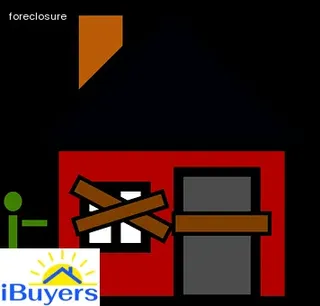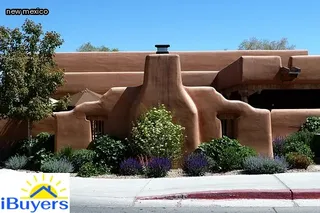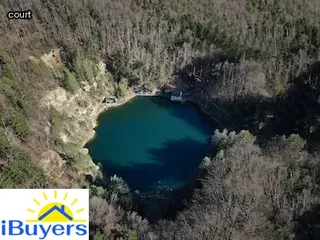Navigating the foreclosure process in New Mexico can be a daunting task for homeowners. Understanding the ins and outs of foreclosure is key to understanding how to prevent it from happening.
Foreclosure is when a homeowner defaults on their mortgage payments and the lender takes action to reclaim the property. In New Mexico, lenders have to notify borrowers before foreclosing on their home with a written notice at least 90 days prior to filing for foreclosure.
After receiving this notice, homeowners should contact their lender immediately and explain why they are behind on payments. Lenders may work with homeowners by providing loan forbearance or other alternatives that can help them make up missed payments.
Homeowners should also look into programs like New Mexico Hardest Hit Fund, which provides financial assistance to those facing foreclosure. Lastly, it’s important for homeowners in New Mexico to understand their rights during the foreclosure process so they can take appropriate legal action if needed.
Knowing what steps to take if a home is facing foreclosure puts homeowners in the best position possible to save their home and keep it out of foreclosure proceedings.

Navigating the foreclosure process in New Mexico can be confusing, but understanding the preforeclosure and foreclosure procedures is key to stopping a house foreclosure. Preforeclosure occurs when mortgage payments become delinquent, and are typically followed by a formal notice of default.
This is an official notification that the lender will move forward with foreclosure proceedings if payment is not made. During this period, homeowners have options to bring their loan current or even negotiate to keep the home.
If payment is not received, then the lender will initiate a public auction or sheriff sale. The winning bidder at such auctions usually takes ownership of the property through a deed transfer.
To avoid this outcome and remain in your home, you must take action before it reaches this stage. Homeowners should contact their lender immediately after they receive default notices so they can discuss how to avoid foreclosure.
Also, it may be beneficial to speak with a lawyer who specializes in real estate law. The sooner you take steps toward resolving your delinquency, the more likely you are to retain ownership of your home.
Homeowners in New Mexico facing foreclosure have certain rights under both state and federal law. The Federal Fair Debt Collection Practices Act (FDCPA) protects homeowners from abusive debt collectors, prohibiting them from engaging in unfair or deceptive practices such as calling at inconvenient times, making false statements, or harassing the borrower.
New Mexico’s Home Loan Protection Act (HLPA) also offers protections to borrowers, ensuring that lenders provide all necessary disclosures before entering into a loan agreement and mandating that they offer borrowers an opportunity to modify their loan terms if they are at risk of foreclosure. Finally, the New Mexico Foreclosure Fairness Act (FAA) requires lenders to notify homeowners of their right to mediation prior to filing for foreclosure and gives borrowers the right to appeal a lender’s decision in court.
It is important for homeowners facing foreclosure to know their rights under state and federal law so that they can better navigate the process and hopefully stop a house foreclosure.

Navigating the foreclosure process in New Mexico can be a daunting experience. It is important to understand the steps that must be taken to stop a house foreclosure.
The first step is to contact the lender and discuss options for creating an affordable payment plan. If a borrower is unable to make payments or has fallen behind, they may be able to negotiate with their lender for a loan modification or refinancing of their existing loan.
Another strategy is to apply for assistance from government or non-profit organizations that offer assistance in preventing foreclosure. Additionally, some lenders are willing to work with borrowers on forbearance agreements, which allow delinquent borrowers to temporarily suspend making payments until their financial situation improves.
Finally, filing for bankruptcy protection can stop foreclosure proceedings, giving debtors time and space to reorganize their finances and determine how best to handle their debt. Knowing the strategies available and understanding what steps need to be taken can help homeowners facing foreclosure in New Mexico successfully navigate the process and avoid losing their home.
If you are a homeowner in New Mexico, it is important to understand the mortgage loan process and the foreclosure process. Understanding how loans work and the impact of a foreclosure on your credit can help protect you from financial hardship.
A mortgage loan is a type of loan that allows borrowers to purchase real estate, such as a house or land, by borrowing money from a lender. The loan is secured by the property as collateral and must be paid back with interest over an agreed-upon period.
In New Mexico, lenders must follow specific guidelines when issuing mortgages and pursuing foreclosure proceedings if payments are not made. When obtaining a mortgage in New Mexico, borrowers should make sure they understand the terms of the loan and any additional fees or restrictions associated with it.
Knowing what rights lenders have when attempting to foreclose on property can also help potential homeowners navigate through this difficult process while protecting their credit score.

Falling behind on mortgage payments in New Mexico can have serious consequences that could lead to foreclosure proceedings. If a homeowner is unable to make payments, the bank could place the home into pre-foreclosure, giving the homeowner a chance to catch up on their payments or negotiate an alternate solution.
If no agreement is reached and payments are still not made, then the property may be put up for auction and sold to another buyer. This process can leave homeowners feeling helpless and frustrated as they watch their home being taken away from them.
It is important for homeowners who are facing foreclosure to research and understand all of their options so they can make informed decisions about how best to proceed with their situation. Knowing how to navigate the foreclosure process in New Mexico may be the key to helping homeowners keep their homes and avoid costly financial repercussions of missing mortgage payments.
Knowing what a breach letter is and how it works is an important part of navigating the foreclosure process in New Mexico. A breach letter is a notification from your lender that you have violated the terms of your loan agreement by failing to make payments.
When this happens, the lender can choose to pursue foreclosure proceedings as a way to recover their money. Breach letters must be issued before any foreclosure action can take place, so it's important to understand what they are and how they work.
Breach letters include details about your loan agreement violation, such as which payment was missed and how much money is owed. It also outlines the next steps that need to be taken in order to stop foreclosure proceedings.
These terms may include paying back all past-due amounts plus interest or coming up with an alternative payment arrangement that satisfies both you and your lender. If you receive a breach letter, it's important to take immediate action to avoid further consequences like having your home sold at auction or having liens placed on property you own.
Even though navigating the foreclosure process in New Mexico can seem intimidating, understanding breach letters and taking prompt action if needed can help you find success in avoiding foreclosure.

When navigating the foreclosure process in New Mexico, it is important to know when the process begins. In most cases, the process begins when a homeowner falls behind on their mortgage payments.
When three or more payments are missed, the loan servicer (mortgage holder) will declare a default and send out a notice of default to the homeowner. This notice gives them 90 days to either bring the loan up-to-date or work out an alternate arrangement with the lender.
The lender may also start foreclosure proceedings during this time if no agreement is reached, which could ultimately result in a foreclosure sale. Homeowners should be aware that they can take action at any point during this process, such as filing for bankruptcy or pursuing a loan modification, as these steps can help stop a house foreclosure from occurring.
New Mexico foreclosure laws are designed to protect homeowners who have fallen behind in their mortgage payments. These laws outline the process lenders must follow when they attempt to foreclose on a home, and they can also provide homeowners with valuable resources to help them avoid foreclosure or delay it.
For example, state laws allow borrowers to work with their lender to create an alternative repayment plan, such as a loan modification or forbearance agreement. Homeowners who are current on their mortgage may be eligible for a short sale or deed in lieu of foreclosure if they are no longer able to make their payments.
Additionally, New Mexico law requires lenders to provide pre-foreclosure counseling services to help struggling borrowers understand the options available to them. Knowing what rights one has under state law is essential for navigating the complicated foreclosure process as quickly and efficiently as possible.

Navigating the foreclosure process in New Mexico can be a daunting task for homeowners. Before a house foreclosure can take place, the mortgage must be reinstated.
This means that the borrower must catch up on past due payments and pay current payments, as well as any additional fees or costs associated with the loan. Depending on how much money is owed, it may be possible to negotiate with the lender to reduce or restructure payments to make catching up easier.
In order to reinstate the mortgage before the sale date in New Mexico, borrowers should contact their lender as soon as they realize they are behind on payments. The lender will provide an amount that needs to be paid in order to bring the loan current and possibly enter into a new payment plan if necessary.
Once these steps are complete, foreclosure proceedings may be stopped and homeowners may be able to stay in their home while keeping up with future payments. Knowing how to stop a house foreclosure through reinstatement of the mortgage is essential for homeowners who want to keep their property and avoid potential legal complications that can arise from having a foreclosure on their credit report.
Navigating the foreclosure process in New Mexico can be a challenging and confusing endeavor. Homeowners facing foreclosure should take the time to understand their rights and how to stop a house foreclosure in order to save their home.
After a foreclosure sale, homeowners in New Mexico have access to something called redemption period, which allows them to regain ownership of the property by paying off all outstanding mortgage debt plus associated costs and fees. In some cases, homeowners may be able to redeem their property before the sale even takes place.
The redemption period following a New Mexico foreclosure sale typically lasts for one year but can vary depending on the situation at hand. This period gives homeowners an opportunity to settle any debt owed and get back into good standing with their lender while avoiding becoming homeless or having a negative impact on their credit score.
Knowing how to take advantage of this post-foreclosure window is essential for anyone looking to protect themselves from losing their home through foreclosure proceedings in New Mexico.

When a homeowner in New Mexico falls behind on their mortgage payments, the foreclosure process can begin. This process culminates with the sale of the property to a new owner.
In some cases, the previous homeowner may still be living in the home after it has been sold and will need to be evicted by the new owner. Understanding the eviction process after a foreclosure sale is key to navigating New Mexico's foreclosure laws.
Once a foreclosure sale is complete, the new owner must follow certain procedures in order to legally evict a tenant. The first step is giving written notice to vacate the property within three days of receiving notice of foreclosure sale or filing of deed transfer with county clerk.
If necessary, an eviction lawsuit can then be filed with local court. During this time, all rental payments due are paid directly to court for safekeeping until final judgment is rendered.
After judgment is obtained, sheriff may serve tenant papers ordering them to leave property within three calendar days or face legal action from court. If needed, landlord may also seek assistance from local law enforcement for removal of tenant from property if they do not comply with eviction order.
Navigating the foreclosure process in New Mexico can be a stressful experience, especially when homeowners are facing fear and uncertainty. To help alleviate these concerns, it is important to understand the legal process and the options available for stopping a house foreclosure.
Homeowners should first contact their lender as soon as they realize that they will not be able to make their mortgage payments. This may allow for temporary payment assistance or loan modification to prevent foreclosure.
A homeowner can also take advantage of mediation services provided by the state to reach an agreement with their lender. Additionally, filing for bankruptcy can temporarily stop a foreclosure and allow more time to negotiate with lenders or refinance loans.
It is also possible to sell the property through a short sale or deed in lieu of foreclosure if there are no other viable solutions. With careful research and planning, homeowners can successfully navigate fear and uncertainty during the foreclosure process in New Mexico and ultimately save their home from being foreclosed upon.

In New Mexico, foreclosures are handled both judicially and non-judicially. Knowing the steps involved in the foreclosure process is vital to understanding how to stop a house foreclosure. Depending on the type of loan, lenders must provide certain notices prior to filing a lawsuit.
The first step is usually a notice of default, which gives homeowners an opportunity to pay off their debt before the foreclosure begins. If the homeowner fails to make payment, the lender may file a complaint with the court and serve it on the homeowner. This document outlines why the lender believes it is entitled to take possession of property for non-payment of debt.
After being served with a complaint, homeowners have 20 days to respond by filing an answer or other pleading with legal defenses, such as disputing whether they owe money or contesting who owns their mortgage note. If they fail to respond within this time frame, they will be considered in default and may lose their right to dispute any of the facts alleged by their lender in court. A hearing will then be scheduled so that a judge can decide whether or not there is sufficient evidence for foreclosure proceedings to proceed.
If granted, an order of sale will issue and be published in newspapers at least three times before it goes into effect. Then, if no one bids on the home during sale day, it will go back to its original owner and can only be sold after all debts are paid in full.
There are many factors to consider when deciding if foreclosure is the best option in New Mexico. If you are struggling to make payments on your home, it is important to understand the consequences of foreclosure and how it can affect your credit score, taxes, and future finances.
It is also important to be aware of local laws that may impact the foreclosure process. Knowing what to expect and understanding the timeline for the process will help you determine whether or not letting your house go into foreclosure is a viable choice.
Additionally, there are several steps you can take to prevent a foreclosure from occurring such as working out a repayment plan with your lender, reaching an agreement with them on loan modification terms, or even filing for bankruptcy protection. Taking all these points into account should help you decide if allowing your house to go into foreclosure in New Mexico is the best decision for your financial situation.

Navigating the foreclosure process in New Mexico can be a difficult and overwhelming experience. Fortunately, homeowners have options to help them manage or stop the foreclosure process altogether.
One of those options is a short sale or deed-in-lieu program, both of which may help reduce losses associated with foreclosure. A short sale is a transaction where the homeowner sells their home for less than what’s owed on the mortgage.
In exchange for accepting the reduced amount, the lender absolves the borrower of any remaining debt. A deed-in-lieu program is another way to avoid foreclosure where the homeowner voluntarily transfers their deed to the lender in exchange for canceling any remaining loan balance.
Both programs require that borrowers meet certain criteria and provide evidence of their financial hardship before they can participate. Homeowners should understand that while these programs may reduce losses associated with foreclosure, they do not eliminate all expenses entirely and may still affect a person’s credit score significantly.
Navigating the foreclosure process in New Mexico can be a daunting task. But it doesn't have to be! There are alternative ways to stop a house foreclosure without having to go through traditional bankruptcy.
One way is to negotiate with your lender and try to come up with an agreement that benefits both parties. This could mean finding a loan modification program, or agreeing upon a repayment plan that works for you.
Another option is to apply for forbearance, which allows you to temporarily reduce or suspend payments for a set period of time, giving you the opportunity to get back on track with your mortgage payments. Additionally, if you're unable to make any payment arrangements, there are still options available like short sale or deed in lieu of foreclosure.
With short sale, a real estate investor will purchase your home at market value and you won't owe anything more than what they pay for it. If this isn’t feasible, then deed in lieu may be the best option; here, you give the deed back to the bank and they release all claims against the property, allowing them to take ownership and avoiding any foreclosures on your record.
No matter what path you choose, it's important that you understand all of your alternatives when facing foreclosure in New Mexico so that you can make the most informed decisions for yourself and your family.
Foreclosures in New Mexico can take anywhere from a few months to several years, depending on the circumstances. The foreclosure process begins once the homeowner falls behind on mortgage payments and the lender files a Notice of Default with the county clerk's office.
The homeowner then has up to 90 days to catch up on payments before the lender can start the foreclosure proceedings. If this does not happen, the lender can file a Notice of Trustee Sale with the court and set a sale date.
After this notice is filed, homeowners have between 21-90 days before their homes are sold at auction. While it is possible for homeowners to get caught up on payments during this time period and stop a foreclosure, they must act quickly as time is of the essence in preventing foreclosure.
It is important for homeowners to understand their rights and options when it comes to navigating New Mexico's foreclosure process and take advantage of programs that may help them avoid losing their home.

Navigating the foreclosure process in New Mexico can be a daunting task. Knowing the steps to take and how to stop a house foreclosure will help homeowners understand their options and preserve their credit. In New Mexico, the foreclosure process begins when a homeowner fails to make mortgage payments for at least three months.
After this period, the lender sends out a notice of default to begin the foreclosure process. The notice of default gives the homeowner 30 days to pay what is owed or face foreclosure proceedings. During this time, the homeowner should contact their lender and explore loss mitigation options such as loan modifications or payment plans that could help them avoid foreclosure.
If the homeowner cannot come up with a solution, they will receive a notice of sale from their lender notifying them that the home is being foreclosed on and sold at auction. The sale must be advertised in local newspapers for four weeks prior to the sale date, giving homeowners an opportunity to redeem their mortgage before it is sold. To do this, homeowners must pay all missed payments as well as costs associated with foreclosure proceedings by the specified deadline.
If it is not redeemed by that date, then ownership of the property will transfer at auction and end any chance of avoiding foreclosure for that homeowner. Knowing what goes into navigating the foreclosure process in New Mexico can help homeowners understand their options and work towards preserving their credit score while also stopping a house from going into foreclosure.
People let their house go into foreclosure for a variety of reasons. Financial hardship, job loss, or medical bills can all contribute to an inability to keep up with mortgage payments.
Unfortunately, when homeowners find themselves in this situation, they may be overwhelmed by the foreclosure process and unsure of how to stop it. In New Mexico, there are several strategies that can be used to navigate the foreclosure process and potentially save a home from being taken away.
Homeowners facing foreclosure should understand their rights and the options available to them to avoid losing their home.
Yes, New Mexico is a right to cure state. This means that homeowners facing foreclosure in the state are provided with an opportunity to pay any outstanding debt before their home is foreclosed upon.
This is known as the right to cure process. By understanding how this process works and taking advantage of it, homeowners in New Mexico can stop a house foreclosure and retain ownership of their property.
The right to cure process begins when a homeowner receives an official notice from their lender outlining the amount they owe and how many days they have to pay it back. The homeowner then has the right to make full payment within that time frame and the lender must accept it in order to avoid foreclosure.
In addition, if the homeowner enters into a repayment plan or loan modification agreement with their lender, then they may be able to avoid foreclosure altogether. Understanding how this process works and taking advantage of it can help New Mexico homeowners prevent a house foreclosure and keep their home.
A: Navigating the foreclosure process in New Mexico can be complex and stressful. However, it is important to understand your rights as a homeowner and to know your mortgage agreement. You should speak with an experienced attorney who can help you assess your situation and provide guidance on how to stop a house foreclosure.
A: To help prevent a house foreclosure in New Mexico you can explore loan modification options, consider refinancing your mortgage, and look into government programs that may provide assistance. It is important to understand your mortgage agreement and the terms of any potential loan modification or refinance before making any decisions.